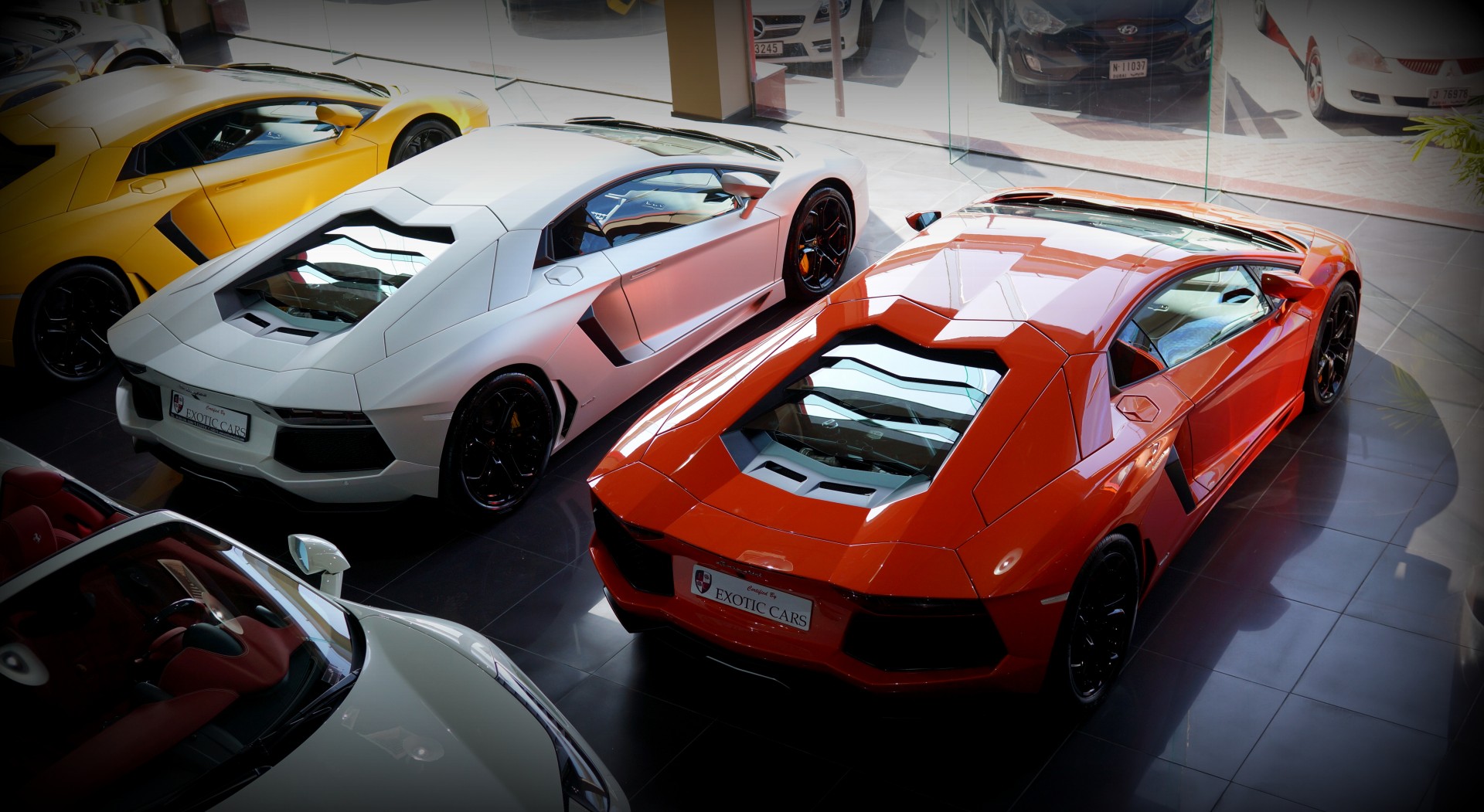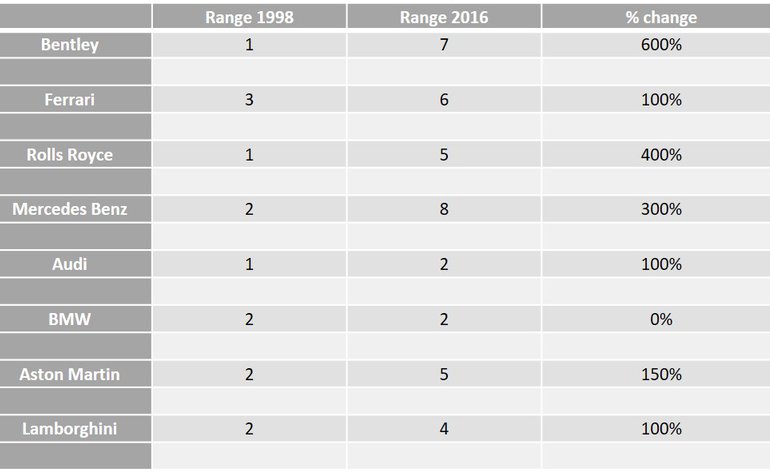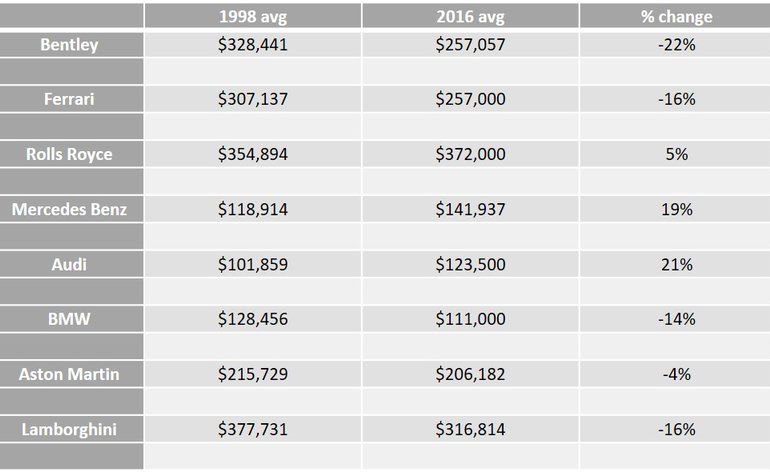A History of Luxury
In the beginning of the car age, this was due to the fact that luxury cars were most often made to order, and the coachwork created was bespoke for each vehicle. Only the very wealthy could afford these cars, and so they became symbols of exclusivity.
- As production methods and technology improved, assembly lines became more sophisticated and efficient, producing higher quality vehicles at lower cost – and far greater volume.
- What this meant was that lower priced vehicles and marques were continually improving and offering greater variety, comfort and performance to buyers; at the top end, though it became possible to incorporate more of these efficiencies into assembly, lowering the cost of producing these cars, there became a need to protect the marque – and not proliferate the market with more vehicles creating what is often termed ‘badge fatigue.’
So what has changed?
Over the last 20 years, this has not held true. In fact, many luxury automobile manufacturers have increased their model range, variants and overall vehicle production. Wealth-X conducted analysis of the model suites of 8 automobile manufacturers, with pricing sourced for 1998 model releases and 2016 model releases.
- What is interesting is that since 1998, range increase is the core trend for supercar/ luxury marques – all of them at least doubled the size of their range.
- Bentley have increased their overall range from 1 vehicle, the Arnage, in 1998 to 7 as of 2016; an increase of 600% (see range table below). Similarly, Rolls-Royce, one of the most exclusive names in automobiles, increased their range by 400%.
- Luxury sports car British marque Aston Martin also more than doubled its range.
- Luxury SUV manufacturer Range Rover have continued this trend with the recent launch of Velar – taking what was a single car brand to a range of 4.
Italian sports car brands, though more modest in range increase – merely doubling – have adopted another approach over the last two decades. These traditionally high-priced, performance-focused car brands have been trying to offer lower priced cars – and more of them – in the last 18 years, despite there being much media attention on expensive, $800,000+ micro-production supercars such as Bugatti Veyron, Ferrari LaFerrari and McLaren P1.
- The pricing table below shows range price averages from the two periods – with the 1998 prices adjusted for inflation.
- Aside from showing that Ferrari and Lamborghini’s range price averages decreased by 16% in the period, it also shows that Mercedes-Benz and Audi – premium marques certainly, but not luxury specialists – have increased their range price average (across their luxury tier vehicles) by 19% and 21% respectively.
So what does this all mean for the future?
Price increase is the core trend for luxury models of premium brands. Much of this flies in the face of luxury marque theory. Luxury specialists with prestige marques are expected to increase prices over time, and keep ranges exclusive.
- Similarly, premium brands are not expected to be able to lift their price points towards luxury price points once their ‘premium’ status has been established. An unwritten luxury rule is that price manipulation is a slippery, and permanently downward, slope. Pierre Cardin being one of the most famous examples. However, all this needs to be examined through the lens of a wealthy consumer, and understood in the context of how this consumer has changed.
- Studies have often found that premium brand’s luxury models have become highly relevant and attractive for many wealthy individuals who have not shown sufficient interest in acquiring supercars or super-luxury marques.
- Even individuals with significant net worth and income can often consider them inappropriate for their lifestyle, too flashy and, crucially, though they can afford to buy them, expensive to maintain. Far from being seen as a status symbol or perk of wealth, owning an expensive-to-run vehicle, with high fuel, servicing and repair costs is often seen as a burden, and in this age of convenience – where services to make life simpler and easier to live are, in themselves, being touted as luxuries – a burden is not associated with luxury lifestyles.
With technological innovation continually advancing, luxury marques have found no limits to their appeal. And so as we await the next luxury marque SUV, or the next premium luxury convertible, we can safely say, far from the luxury car industry showing signs of decline, with innovation at its core, it will drive from strength to strength.
If you enjoyed reading this and would like to read more luxury related content, feel free to take a look at our Luxury Case Studies Library!








